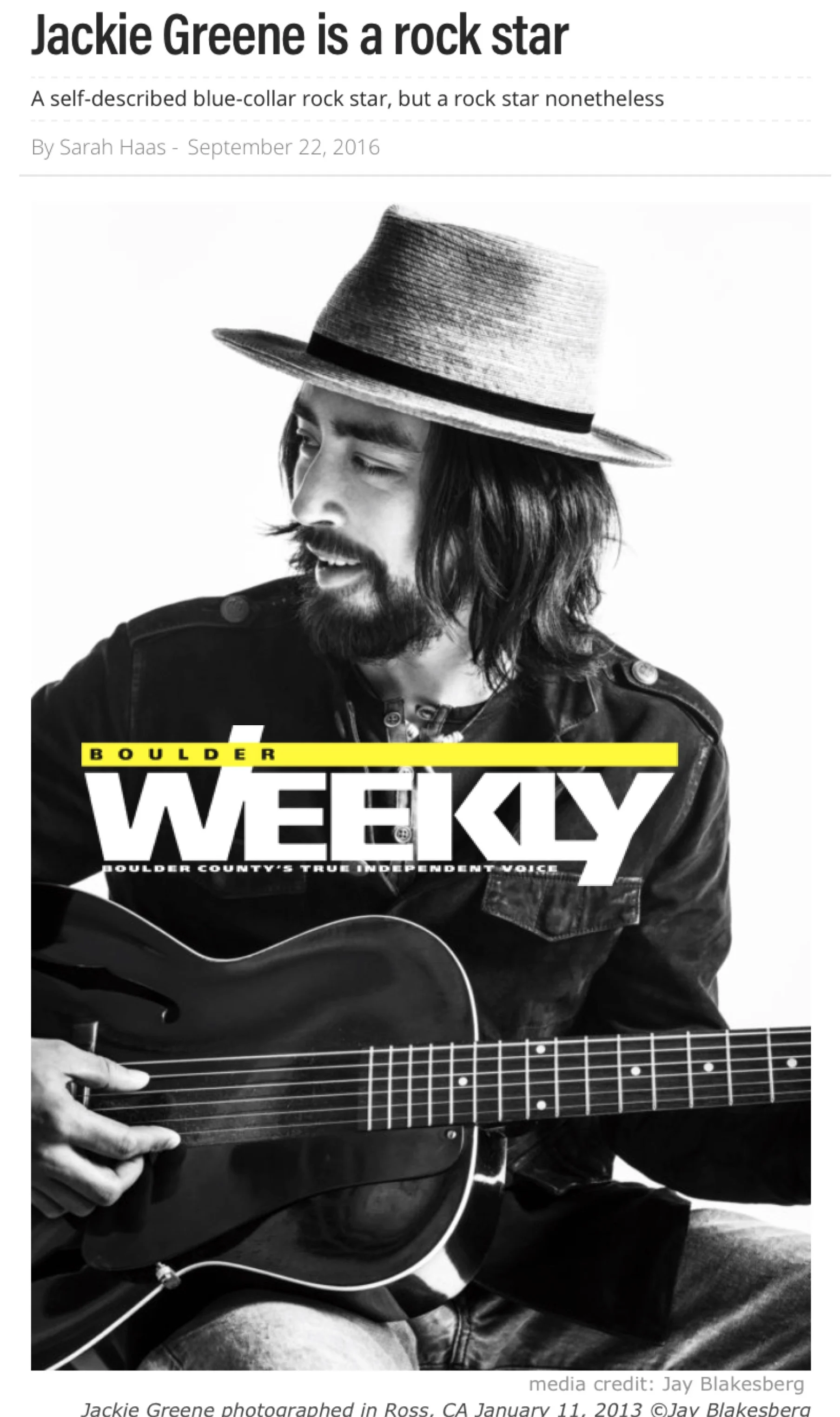A self-described blue-collar rock star,
but a rock star nonetheless
By
-
September 22, 2016
It’s easy to picture the life of a hard working musician — playing late into the night, touring long cross-country miles on a bus, lugging equipment from town to town. But when Jackie Greene mentions work, that’s not the kind he’s talking about.
“As an artist, I am supposed to be vulnerable,” he says. “It’s my job.”
Music may be Greene’s art and his language, but it’s also his livelihood. Some say it’s the kind of job you’re born to do and yeah, talent is important, but to watch Greene play is to watch 35 years of life exploration pour out, each time better than the last.
His approach to music is susceptible and open, with the kind of wisdom that knows beauty happens when you are just as impressionable as you are creative.
Back to Birth, his latest album from 2015, is his most personal yet. The album is full of the honest truths of his day-to-day and, just like good folk music, it feels like sitting with a good friend while he tells stories about love, loss and the hard road of life.
Greene’s vulnerability is evident in his voice, in his expressions, in the way his hands strum the guitar, strike the piano or orchestrate the other musicians on the stage — it’s as if the music relies on Greene’s rhythm for its own.
Since his early 20s, Greene has played with Phil Lesh, Bob Weir, Neal Casal, Gov’t Mule, BB King, Tim Bluhm and the Black Crowes, to name a few. In sharing the stage, Greene’s art and life is reminiscent of the so-called gurus in his artistic lineage. He’s been able to assimilate their knowledge of music, allowing it to leave a mark on him in the process.
Perhaps more notable than any stylistic similarities are those that lie beneath. The various artists in Greene’s musical lineage have each maintained an enduring humility, rarely succumbing to the vanity of their stardom. Instead, their popularity only seemed to fuel and inspire their love of live music.
Greene is likewise emerging as a master of live performance and comes at it with a sincere curiosity explored through an emphasis on the present.
“As an art form, [live] music is funny because you play it and then it is gone,” Greene says. “Not like a painting — you paint a painting and it is there and it is the same when someone else looks at it, but music is weird, it goes away. It is fleeting, you know? Where does it go once you play it?”
On the stage, familiar songs take on new life, each time telling their story a little differently, keeping a slightly different rhythm, staying true to their origins and reinventing themselves at the same time.
Similarly, Greene is a bridge between history and future, constantly bringing his music to the next generation without forsaking the traditions of the past. And, over the past 10 years Greene has progressed from the young talent in fine company to the leader of the pack — a powerful and humbling transformation to watch.
It’s powerful because he stepped into the role of conductor, orchestrating the notes as they are played and elevating everyone in the process.
It’s humbling because Greene seems to lead as if from behind, making everyone else shine more brightly, forsaking his own spotlight for the proverbial love of the game.
The result is ever-evolving music, each performance adding to the last.
“Let’s say you go see a concert and you hear your favorite song — that becomes the definitive version, that time you saw it,” Greene says. “It could be different every time, sometimes it is a lot different, sometimes not so much. Every time I go on stage it is a chance to make it a new, definitive version of every song we play.”
Greene feels a sense of relief in shedding constancy and embracing change — a messy style that fits Greene well, but is ill-suited for anyone who wants to take the blue collar out of being a rock star.
“I think there is a lot more power in just creating day-to-day art and music and whether or not you are commercially successful kind of doesn’t really matter,” Greene says. “For me being successful is more a matter of the art that you are able to create in your lifetime and what you are able to put out, music wise, in the world. A successful life for me includes all of those things: It includes music, it includes a family, it includes some sort of stability financially, it includes — you know I hate to say it — but sort of the normal things in life.”
Lately, he’s used this artistic mentality to explore other media — from photography to painting and linoleum block prints — where Greene is getting the chance to see his otherwise immaterial process take on a physical form.
“Basically I make huge messes,” Greene says. “I have paint everywhere. If this were the music studio, there would be cords and tables and shit lying around, but it’s paint and it’s everywhere. There is paint on the floor, for God’s sake.”
No matter what art form, creating is a fundamental part of living for Greene. The end product is often unrecognizable from its origins, but Greene says that’s more than OK — that’s how it should be.
“That’s part of the fun of the whole thing,” he says. “You don’t really know what’s coming.”

